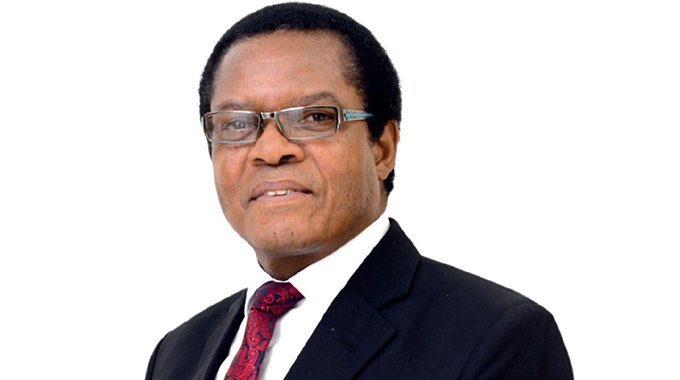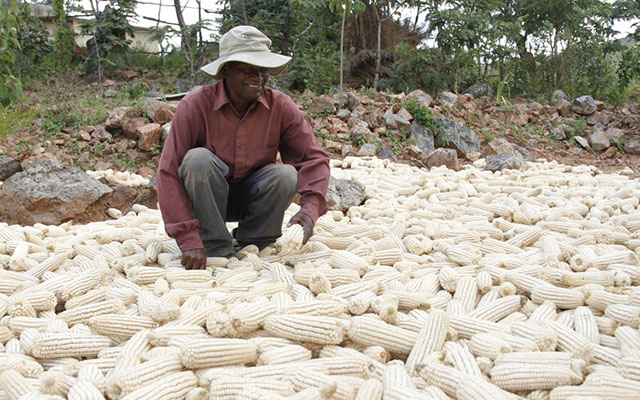New Parliament Building handover signifies progress

Lovemore Chikova Development Dialogue
The official handover of the New Parliament Building in Mt Hampden yesterday signalled the growing relationship between Zimbabwe and China.
The cordial relations have managed to produce tangible results through completed projects such as the new building.
The new, majestic building is all the more important as it comes on the back of the commissioning of the new Hwange 7 and 8 power generation units recently at Hwange Thermal Power Station.
The power units were done with the aid of China.
The timing of the handing over of the New Parliament Building, which was done yesterday, is apt, as it came just a day after the country marked the SADC Anti-Sanctions Day on Wednesday.
The New Parliament Building came as a result of Zimbabwe’s deliberate Look East Policy that was formulated out of the realisation that with illegal sanctions from Western countries in place, the country had to search for alternative partners for its development.
This sanction-busting measure has indeed worked and the result can be seen through such complete projects as the New Parliament Building.
What this shows is that Western countries are not entirely the start and end of partnerships in development, as there are now alternatives which developing countries can cooperate with.
In fact, there are far too many alternatives in other parts of the globe that actually do much better compared to relationships born out of neo-colonialism.
This is why cooperation between Zimbabwe and other progressive countries is important in the face of the illegal sanctions imposed by the West.
The New Parliament Building symbolises the growing relations between Zimbabwe and China, which have grown from mainly being political to becoming economic and developmental in recent years.
The new building is another milestone in this growing relationship which is based on win-win cooperation and mutual benefit.
The New Parliament Building is one of the developmental achievements of the New Dispensation that underlines the positive approach to development being pushed by President Mnangagwa.
The new complex, built as a gift from China, is modern and brings convenience to parliamentarians as they carry out their national duty without bothering about being squashed.
The New Parliament Building brings with it opportunities that come with urban expansion, which opens up more space for the ever-increasing urban population in Harare.
Harare is now known to be congested, both by human and vehicular traffic, and the building of a new city in Mt Hampden will lessen this burden as people and businesses relocate.
The new city around the New Parliament Building will come with fresh infrastructure, enhancing the ease of doing business and attracting more investors.
The New Parliament Building was constructed by Shanghai Construction Group and sits on an area of 50,000m2.
It will comfortably accommodate joint sittings of the Senate and the National Assembly when necessary, compared to the old Parliament Building in the city centre which had become too small.
The New Parliament Building is just one of the developmental projects that have ensured Zimbabwe continues to progress despite the illegal sanctions imposed by the West.
As pointed out earlier, the expansion of Hwange Thermal Power Station is expected to improve Zimbabwe’s drive towards industrialisation.
Electricity is necessary to power industries and help modernise sectors such as agriculture that have been affected by sanctions.
Apart from working on Hwange Thermal Power Station, Chinese firm SinoHdyro also expanded Kariba South Power Station.
The Hwange expansion added more than 600MW to the national grid, while Kariba South had 300MW.
The pharmaceutical hub built by the Chinese in Southerton was officially opened recently, adding efficiency in the handling and storage of medicines.
Robert Gabriel Mugabe International Airport was expanded to international standards by Chinese company Jiangsu International Corporation, and can now handle more than six million travellers per year, up from two million.
The new airport now boasts of modern facilities that are a joy to air passengers.
A lot of airlines are now being attracted to Zimbabwe, with the big ones like Emirates, Ethiopian Airlines, Qatar Airways and Kenyan Airways now landing there.
Another mega project completed by the Chinese is the Victoria Falls International Airport that was upgraded to international standards and can now accommodate wide planes. This has improved tourist arrivals to the major tourism hub for Zimbabwe as airlines can now fly directly to the destination.
With such international airlines as Eurowings now flying to Victoria Falls, there is no doubt that Zimbabwe’s tourism sector will continue to expand.
Another project brought by China is the expansion of national fibre optic broadband aimed at improving connectivity in the information communication technology sector.
But is it the handing over of the New Parliament Building yesterday which has become the latest step in the cooperation between Zimbabwe and China.
The new building is significant in reminding Zimbabweans that progress can still be made in the face of the illegal sanctions.
It is important to point out what exactly was handed over to President Mnangagwa yesterday and here are the major highlights of the new building:
- The building is located in Mount Hampden, about 18km north-west of Harare along Old Mazowe Road and sits on an area of 50,000m2.
- It is a six-storey circular structure sitting on a 70-metre platform above the picturesque surrounding area.
- It has four pillars at the top of which eight Zimbabwe birds are perched.
- The project was made possible by a grant from the government of the People’s Republic of China through China-Aid.
- Feasibility studies were carried out by the Beijing Institute of Architectural Design Company Limited in 2015.
- It was designed by China SIPPR Engineering Group and constructed by Shanghai Construction Group.
- There are four floors on the Parliament side and an adjacent six-storey office building.
- The building has a Chamber House containing the 350-seat National Assembly and 100-seat Senate.
- A 108-seat gallery overlooks the National Assembly, with an 84-seat gallery overlooking the Senate.
- The building has 24 interpreters’ rooms for both the National Assembly and the Senate; 12 for each House, which are linked to the public address system.
- There are three bridges that link the Chamber House to the office building on each of the floors from the first, second and third, making them a total of nine.
- The building hosts two spacious and exquisitely furnished special committee rooms.
- It has 15 committee rooms, some that can host 30 people, while others can take 44.
- There are 600 well-furnished rooms — some for service areas, directors’ offices and VIP offices.
- There are bar areas, a staff canteen, a dining hall, library, storerooms, server rooms and public receptions on each floor.
- There is a press studio and conference room and a multi-purpose hall
- The parking area can accommodate 800 vehicles.
- At least 135 Chinese engineers and 350 locals worked on the building







Comments